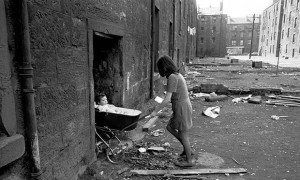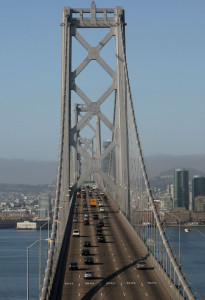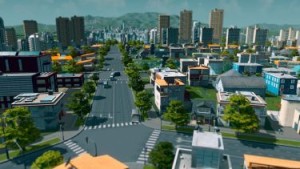Yaminay Chaudhri ~ Anxious Public Space (A Preface)
What is the city but the people?” asks the opening sentence of the Capital Development Authority’s (CDA) website. The sentence – originally from Shakespeare’s play Coriolanus – expresses a sentiment appropriate for this government-owned public benefit corporation, tasked with running and maintaining the master plan of the capital city of Pakistan. Upon researching the CDA’s establishment, I discovered a lineage of military leadership starting with General Ayub Khan and the organisation’s first chairman, General Agha Muhammad Yahya Khan, who defined the charter of this organisation and its role in building Islamabad. This essay provides a preface to a longer discussion about public space in Pakistan by analysing perceptions of the ideal city, in popular and official discourse.
On a sweltering July day in Islamabad this year, images of bulldozers, riot gear, and protesting men, women and children dragged from their homes in a katchi abadi,poured into news circuits and social media. The CDA announced a successful removal of all illegal occupants from sector I-11, who posed (among other things) security threats and sanitation risks to the city. It is almost tragic that a government institution tasked with representing the ‘people’ of a city, could be responsible for the eviction of thousands of them from their homes, with no alternatives for resettlement.
Read more: http://herald.dawn.com/news/
Ann Seltman Smart ~ A Is For Architecture
A vintage film (mid-1960’s) on the importance of architecture in everyday life. Produced by Ann Seltman Smart, formerly of WPTF-AM in Raleigh, North Carolina. Narrated by Ted Daniel.
Laura Bliss & Aarian Marshall ~ How High-Tech Maps Could Help Urban Slums Plan Better Streets
In slums, buildings are often so densely packed that many are cut off from streets and pathways. This creates a literal roadblock to much-needed public resources.
“In South Africa, governments will often say that informal settlements are too dense to install adequate services,” Charlton Ziervogel, deputy director at the Communities Organization Resource Centre, a Cape Town-based slum advocacy and support NGO, tells CityLab. “So you’ll find municipalities that install toilets, but only at the edge of a settlement, because they perceive that there is no space inside.”
It’s a serious matter. Across the global south, hundreds of millions live in slums lacking piped water, proper drainage, and sanitation—ideal breeding grounds for virus-carrying insects and other types of disease. To fight epidemics such as Zika, experts warn, living conditions for the urban poor must be improved. But to do so, many slum communities first need to open up space.
Read more: http://www.citylab.com//high-tech-map
Emily Badger ~ How To Make Expensive Cities Affordable For Everyone Again
Last week, we wrote about a new report from the California Legislative Analyst’s Office that found that poorer neighborhoods that have added more market-rate housing in the Bay Area since 2000 have been less likely to experience displacement. The idea is counterintuitive but consistent with what many economists theorize: Build more housing, and the cost of it goes down. Restrict housing, and the cost of it rises. If you’re a struggling renter, you’re better off if there’s more housing for everyone.
Many readers responded by saying “of course! supply and demand!” as if we’d just uncovered the obvious. Many others responded “of course! supply and demand!” — by which they meant, facetiously, that market dynamics clearly don’t work this way in neighborhoods like the Mission in San Francisco, where poor residents feel pushed out by tech workers moving in.
Read more: https://www.washingtonpost.com/expensive-cities
Adam Greenfield ~ Where Are The World’s Newest Cities … And Why Do They All Look The Same?
At present we share our planet with some 7.5 billion other human beings, and as swollen as that number may already sound, it is projected to hit 10 billion before levelling off sometime around the middle of the century.
Global population may never scale the vertiginous peaks foreseen in the panicky neo-Malthusian literature of the mid-20th century, chiefly Paul and Anne Ehrlich’s famous jeremiad of 1968, The Population Bomb. Nor will overpopulation’s effects, as they fold back against the cities of the global north, much resemble the apocalyptic depictions in the era’s pop culture; 1973’s Soylent Green, for example, opens with a title card informing the viewer that 40 million souls reside in the smog-choked New York City of 2022, and that seems more than a little hard to imagine now. But neither is it a state of affairs one can dismiss casually. Every last one of those 10 billion human beings is going to need a place to live.
Read more: http://www.theguardian.com/where-world-newest-cities
Jamie Doward ~ Shelter And The Slums: Capturing Bleak Britain 50 Years Ago

A mother takes her baby inside her condemned tenement block Gorbals 1970. Photograph: Nick Hedges for Shelter
From 1968 to 1972, photographer Nick Hedges toured the country for Shelter. His work galvanised politicians – and now the charity wants to find out what happened to those he portrayed.
At first glance they seem to be the survivors of a besieged city. Standing in front of decrepit buildings that tower over streets absent of cars, they cut abject figures. Children in ragged clothes play on wasteland; a mother and her teenage daughter huddle in their home, a cellar lit by just one light bulb; a father in a dank living room festooned with broken furniture holds his toddler son close to his chest.
But these people have not been bombed into submission. They are not experiencing the horrors of the second world war. They are living in Britain in the swinging 60s, an era that the then prime minister, Harold Wilson, famously promised would deliver material improvements for all, thanks to the “white heat of technology”.
They are the inhabitants of Britain’s slums whose desperate plight, captured by the photographer, Nick Hedges, for the housing charity Shelter, helped alert the public to the woeful living conditions many people were enduring in the country’s neglected inner cities.
Read more: http://www.theguardian.com/homeless-shelter-charity?





